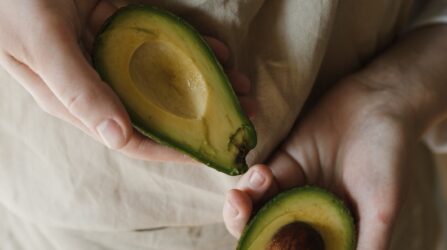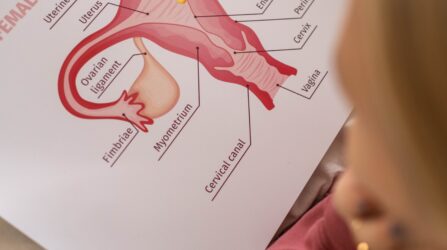
Vata Dosha is the energy that governs movement and communication in the body. When we think of the Vata Dosha its characteristics are motivated, energetic and adaptable. It is associated with ether and air elements making it light, cold, dry, clear, rough and mobile.
Physically Vata types tend to be of thin build with light bone structure and less body fat. Their skin tends to be dry and dark with visible veins and joints and they can be prone to cold hands and feet.
Vata types are quick thinkers and movers who have short bursts of energy in which they can get lots accomplished. They are both creative and sensitive but can tire quickly so it’s important for them to take time to refuel and relax. Due to the mobile and changeable nature of Vata they’re often on the move, fidgeting a lot and changeable in their sleeping or eating patterns.
Signs of a Vata imbalance might manifest themselves as dry skin, constipation, anxiety and insomnia. Because Vata energy is so strong many people will experience a Vata imbalance at some point, even if this isn’t their dominant Dosha. Luckily there are many grounding tips and exercises, especially relating to your diet, that will harness the Vata Dosha and keep it in healthy balance.
Remember you can find out which is your most dominant Dosha by taking a simple test online or by visiting an Ayurvedic practitioner. You can also learn more about each Dosha in ‘The Introduction to Ayurveda’ article.
Due to the mobile nature of Vata favour foods that are sweet, sour and salty. Because Vata energy is cold and drying Vata types will respond well to a diet that is grounding and oily.
Vata types should avoid spicy foods and seasonings, especially those that are dried, as this can aggravate the already dry nature of Vata. Sweet foods are particularly grounding to Vata but take care to avoid processed and refined white sugars, instead opt for natural sweeteners such as agave syrup, honey, maple syrup, molasses and stevia. Vata types can have problems with digestion so aim for warm, easy to digest foods when creating meal plans.
Vata types should avoid cold food and drinks which can aggravate the already cold nature of Vata.
Vata types should ensure they avoid salads, dried fruits and frozen foods. Encourage warmth in the body by drinking warm drinks with meals such as herbal teas or lemon water.
Vata energy is at its most prominent between 2pm and 6pm and Ayurvedic teachings, for all Doshas, promote eating the biggest meal of the day at midday. Vata types can find meat harder to digest so try and eat this for your midday meal rather than your evening meal to allow your body sufficient time to digest this before you go to sleep.
Digestion can be unpredictable if it’s not controlled so make sure you leave between 2 to 3 hours between each meal. Hunger can vary for Vata types and at times they will be ravenous and other times they’ll find themselves skipping meals; regular controlled portions will help balance this.
The nature of Vata is very changeable especially when it comes to eating and sleeping patterns. Routine is the key word for balancing Vata types and ensure you stick to routine; go to bed at the same time each day and eat regular and balanced meals.
You’ll often find a Vata type rushing around, doing a million things at once; they’ll often eat quickly or on the go which only serves to aggravate Vata imbalance further. Instead sit down to eat at the same time each day and take it slow; appreciate each bite and really taste the flavours on your plate.
Vata types are sensitive to cold weather which can manifest itself in dry skin conditions. To combat this, practice Abhyanga (daily self massage) by applying a rich natural oil, such as sesame, all over the body using firm upward strokes. To really feel the hydrating benefits wrap yourself in a dressing gown after you have applied the oil and let it soak in for approximately 40 minutes. Finish with a warm bath to help unwind that busy Vata energy and feel especially grounded.
When it comes to exercise Vata types can easily over exert themselves, especially if they do strenuous or high endurance sports which increases the air element in the body. Instead opt for fun, gentler exercises such as, yoga, swimming and jogging. Anxiety and racing thoughts are indicators of a Vata imbalance so use practices like yoga and meditation to still the mind.
When properly balanced Vata types are full of infectious, creative energy and are a joy to be around but because of the mobile nature of Vata they can find it very easy to become unbalanced and exhausted. Like with any holistic approach to your wellbeing invest time and patience into finding what works best for you. Start listening to your body and learn what feels good, what doesn’t and make small steps to rectify this. When we put our mental and physical health first, as Ayurveda teaches us, we open up a whole new world of possibilities and abundance.

-


Dr Singh is the Medical Director of the Indiana Sleep Center. His research and clinical practice focuses on the myriad of sleep.

The importance of the follicular phase While it may not be the most fun part of the menstrual cycle, the follicular phase plays a key role in your reproductive health. As we mentioned, the follicular phase begins on the first

Understanding female hormones If you’ve never heard that women have specific feminine hormone levels, you’re probably wondering, “What are the female hormones and how many hormones do women have? Female hormones are hormones released in higher concentrations in a woman’s

Understanding estrogen and its role in pregnancy Estrogen is one of the most important sex hormones, impacting every part of the fertility process. During your menstrual cycle, estrogen levels influence LH production, which triggers ovulation. While progesterone is responsible for
Hormona© 2025, All Rights Reserved
Privacy Overview
| Cookie | Duration | Description |
|---|---|---|
| cookielawinfo-checkbox-analytics | 11 months | This cookie is set by GDPR Cookie Consent plugin. The cookie is used to store the user consent for the cookies in the category "Analytics". |
| cookielawinfo-checkbox-functional | 11 months | The cookie is set by GDPR cookie consent to record the user consent for the cookies in the category "Functional". |
| cookielawinfo-checkbox-necessary | 11 months | This cookie is set by GDPR Cookie Consent plugin. The cookies is used to store the user consent for the cookies in the category "Necessary". |
| cookielawinfo-checkbox-others | 11 months | This cookie is set by GDPR Cookie Consent plugin. The cookie is used to store the user consent for the cookies in the category "Other. |
| cookielawinfo-checkbox-performance | 11 months | This cookie is set by GDPR Cookie Consent plugin. The cookie is used to store the user consent for the cookies in the category "Performance". |
| viewed_cookie_policy | 11 months | The cookie is set by the GDPR Cookie Consent plugin and is used to store whether or not user has consented to the use of cookies. It does not store any personal data. |
